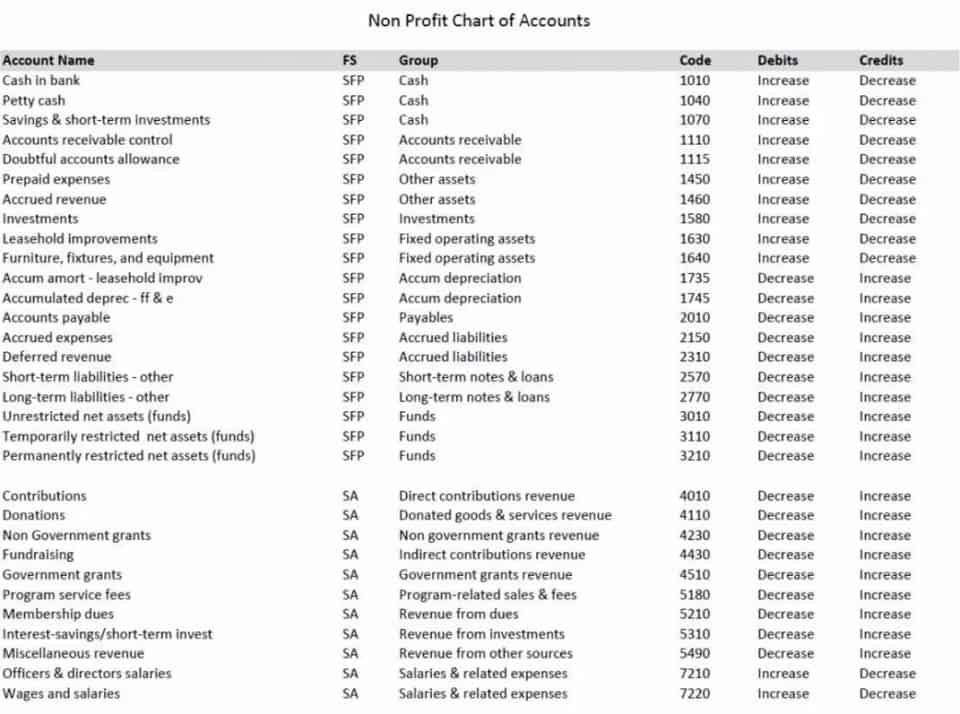Fundamental Accounting Equation Explained: Definition, Examples, Practice & Video Lessons
Below are some examples of transactions and how they affect the accounting equation. Shareholders’ equity is the total value of the company expressed in dollars. Put another way, it is the amount that would remain if the company liquidated all of its assets and paid off all of its debts. The remainder is the shareholders’ equity, which would be returned to them. In other words, the total amount of all assets will always equal the sum of liabilities and shareholders’ equity. So now let’s discuss the fundamental accounting equation, the foundation for everything you’re going to learn in this class.
Sole Proprietorship Transaction #8.
As you can see, ASC’s assets increase by $10,000 11 best excel tips for beginners and so does ASC’s owner’s equity. Double-entry bookkeeping is a fundamental accounting concept that requires every financial transaction to affect at least two different accounts. It also requires that all entries must have equal debits and credits. Since the accounting equation depicts a mathematical equality, it also follows that all debits must always equal all credits.
However, in simple terms, debits and credits are merely the two sides of the accounting equation. Debits increase the left side of the equation (assets) or decrease the right side of the equation (liabilities and owner’s equity). Because it considers assets, liabilities, and equity (also known as shareholders’ equity or owner’s equity), this basic accounting equation is the basis of a business’s balance sheet.
Relationship between balance sheet items
At some point, the amount in the revenue accounts will be transferred to the retained earnings account. The income statement for the calendar year 2024 will explain a portion of the change in the owner’s equity between the balance sheets of December 31, 2023 and December 31, 2024. The other items that account for the change in owner’s equity are the owner’s investments into the sole proprietorship and the owner’s draws (or withdrawals). A recap of these changes is the statement of changes in owner’s equity. Here is a statement of changes in owner’s equity for the year 2024 assuming that the Accounting how to sell on wayfair Software Co. had only the eight transactions that we covered earlier. The proceeds of the bank loan are not considered to be revenue since ASC did not earn the money by providing services, investing, etc.
Purchasing a Machine with Cash and Credit
The totals indicate that the transactions through December 4 result in assets of $16,900. There are two sources for those assets—the creditors provided $7,000 of assets, and the owner of the company provided $9,900. You can also interpret the accounting equation to say that the company has assets of $16,900 and the lenders have a claim of $7,000 and the owner has a residual claim for the remainder.
Corporation Transaction C6.
Since ASC has completed the services, it has earned revenues and it has the right to receive $900 from the clients. This right increases the asset known as accounts receivable. The earning of revenues causes owner’s equity to increase. This straightforward relationship between assets, liabilities, and equity is the foundation of the double-entry accounting system. That is, each entry made on the Debit side has a corresponding entry on the Credit side.
The basic accounting equation at a glance
- The accounting equation is so fundamental to accounting that it’s often the first concept taught in entry-level courses.
- Also a stockholders’ equity account that usually reports the cost of the stock that has been repurchased.
- Since ASI has not yet earned any revenues nor incurred any expenses, there are no amounts to be reported on an income statement.
- Examples include cash, investments, accounts receivable, inventory, supplies, land, buildings, equipment, and vehicles.
- As inventory (asset) has now been sold, it must be removed from the accounting records and a cost of sales (expense) figure recorded.
- Liabilities also include amounts received in advance for a future sale or for a future service to be performed.
If the net amount is a negative amount, it is referred to as a net loss. That part of what is overtime the accounting system which contains the balance sheet and income statement accounts used for recording transactions. The accounting equation tells us that ASI has assets of $10,000 and the source of those assets were the stockholders. Alternatively, the accounting equation tells us that the corporation has assets of $10,000 and the only claim to the assets is from the stockholders (owners).
Since ASC has not yet earned any revenues nor incurred any expenses, there are no amounts to be reported on an income statement. In fact, most businesses don’t rely on single-entry accounting because they need more than what single-entry can provide. Single-entry accounting only shows expenses and sales but doesn’t establish how those transactions work together to determine profitability. While single-entry accounting can help you kickstart your bookkeeping knowledge, it’s a dated process that many other business owners, investors, and banks won’t rely on. That’s why you’re better off starting with double-entry bookkeeping, even if you don’t do much reporting beyond a standard profit and loss statement. The accounting equation is so fundamental to accounting that it’s often the first concept taught in entry-level courses.
- When a specific account is identified as uncollectible, the Allowance for Doubtful Accounts should be debited and Accounts Receivable should be credited.
- A long-term asset account reported on the balance sheet under the heading of property, plant, and equipment.
- So, if a creditor or lender wants to highlight the owner’s equity, this version helps paint a clearer picture if all assets are sold, and the funds are used to settle debts first.
- Things that are resources owned by a company and which have future economic value that can be measured and can be expressed in dollars.
- This shows all company assets are acquired by either debt or equity financing.
- Of course, this lead to the chance of human error, which is detrimental to a company’s health, balance sheets, and investor ability.
- The other items that account for the change in owner’s equity are the owner’s investments into the sole proprietorship and the owner’s draws (or withdrawals).
Revenues & Expenses in the Accounting Equation
Although revenues cause owner’s equity to increase, the revenue transaction is not recorded directly into the owner’s capital account. At some point, the amount in the revenue accounts will be transferred to the owner’s capital account. The totals now indicate that Accounting Software Co. has assets of $16,300. The creditors provided $7,000 and the owner of the company provided $9,300. Viewed another way, the company has assets of $16,300 with the creditors having a claim of $7,000 and the owner having a residual claim of $9,300.
Lastly, we will briefly examine the expanded accounting equation. It is easy to see that an additional investment by the owner will directly increase the owner’s equity. Similarly, a withdrawal of money by the owner for personal use will decrease the amount of owner’s equity. Based on the data in the previous section, here’s the journal entry to record the payment of the accrued December rent in January. When A/R is paid, the amount paid is just transferred to cash. Cash (asset) will reduce by $10 due to Anushka using the cash belonging to the business to pay for her own personal expense.
Accounting Equation for a Sole Proprietorship: Transactions 1-2
Under the accrual basis of accounting, the matching is NOT based on the date that the expenses are paid. Fees earned from providing services and the amounts of merchandise sold. Under the accrual basis of accounting, revenues are recorded at the time of delivering the service or the merchandise, even if cash is not received at the time of delivery. The balance sheet reports the assets, liabilities, and owner’s (stockholders’) equity at a specific point in time, such as December 31. The balance sheet is also referred to as the Statement of Financial Position. The totals now indicate that Accounting Software, Inc. has assets of $16,300.
As you can see, assets equal the sum of liabilities and owner’s equity. This makes sense when you think about it because liabilities and equity are essentially just sources of funding for companies to purchase assets. Journal entries often use the language of debits (DR) and credits (CR). A debit refers to an increase in an asset or a decrease in a liability or shareholders’ equity. A credit in contrast refers to a decrease in an asset or an increase in a liability or shareholders’ equity.
Every transaction is recorded twice so that the debit is balanced by a credit. The totals for the first eight transactions indicate that the company had assets of $17,200. The creditors provided $7,120 and the owner provided $10,080.
The fundamental accounting equation, also called the balance sheet equation, is the foundation for the double-entry bookkeeping system and the cornerstone of accounting science. In the accounting equation, every transaction will have a debit and credit entry, and the total debits (left side) will equal the total credits (right side). In other words, the accounting equation will always be “in balance”. Valid financial transactions always result in a balanced accounting equation which is the fundamental characteristic of double entry accounting (i.e., every debit has a corresponding credit).






